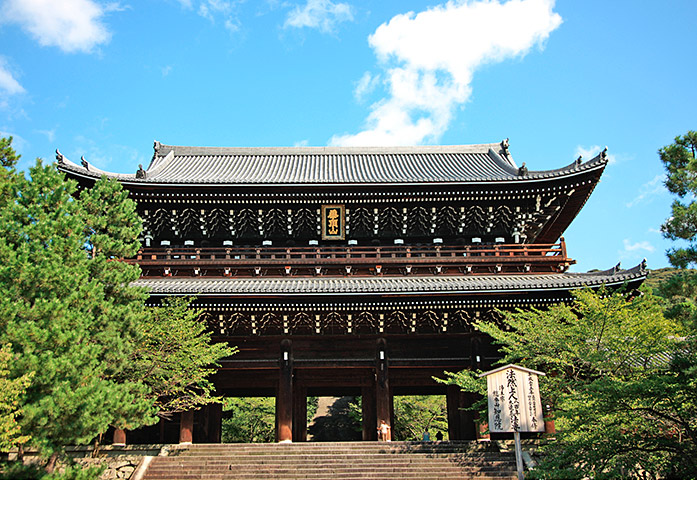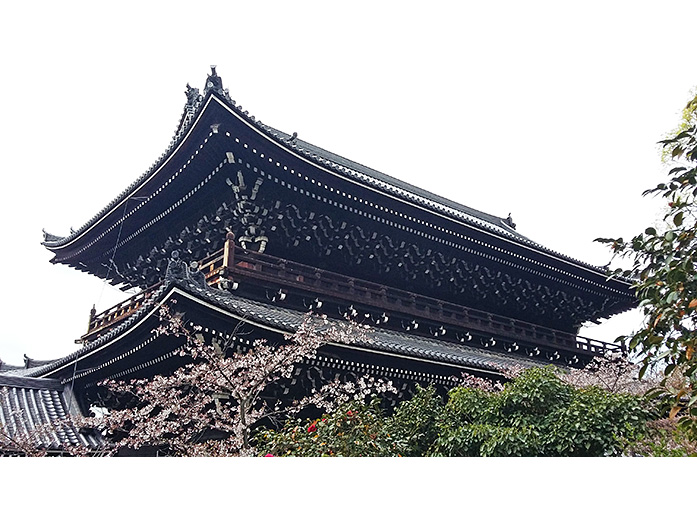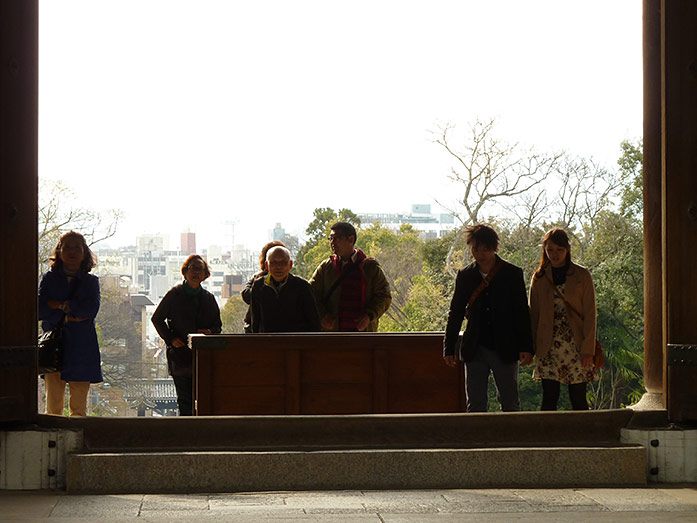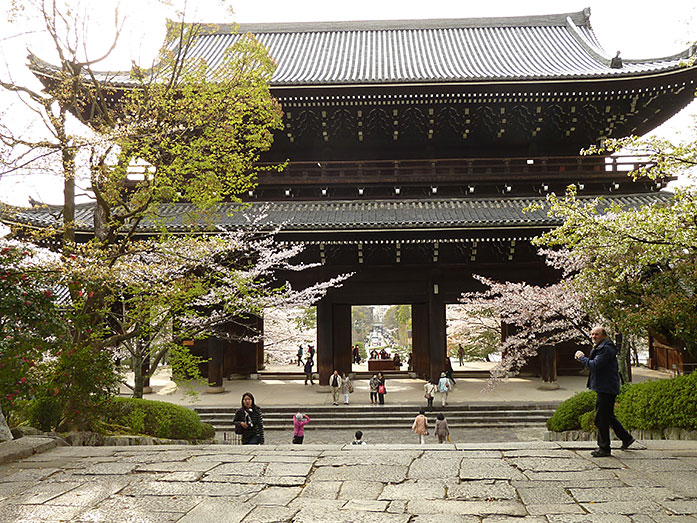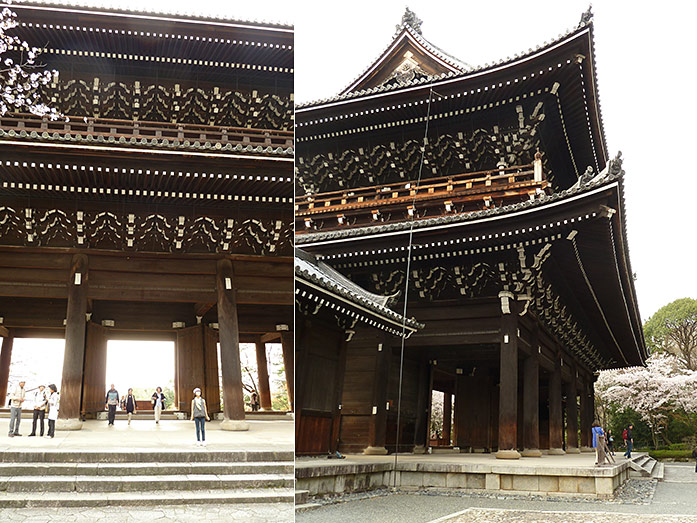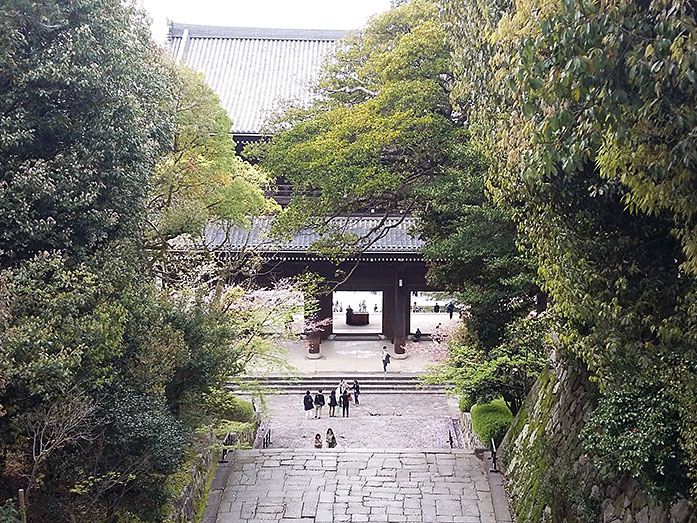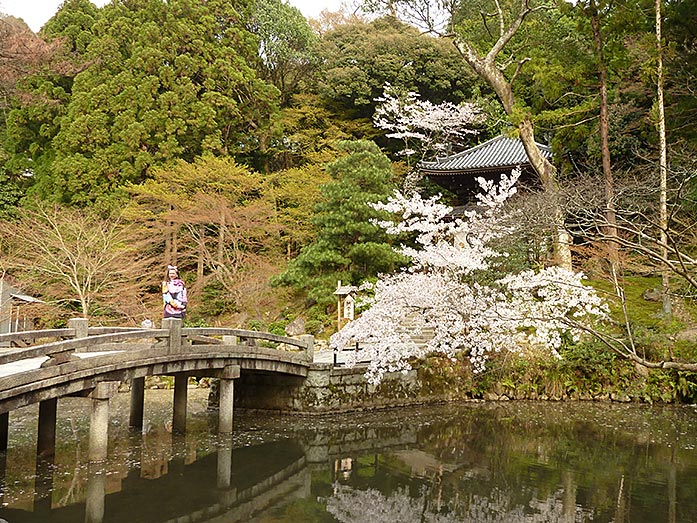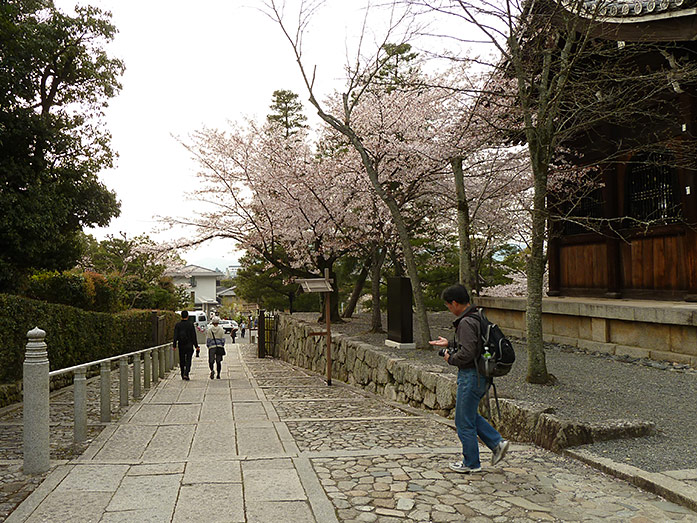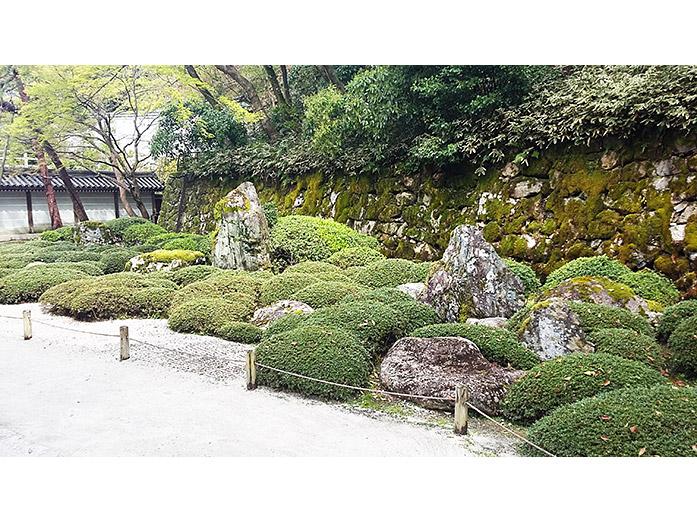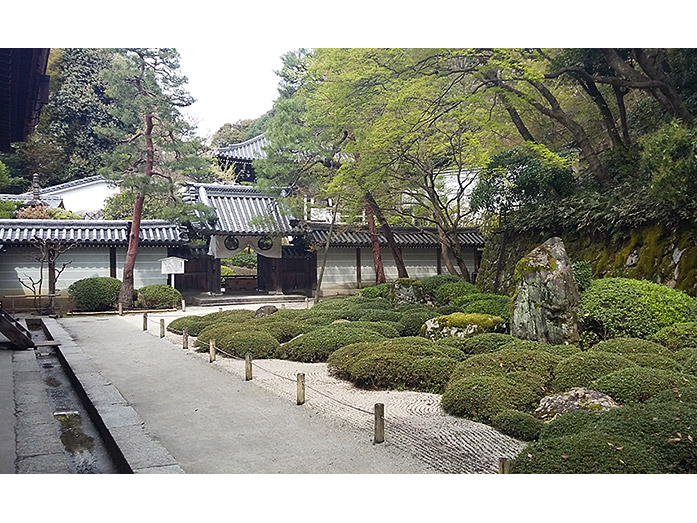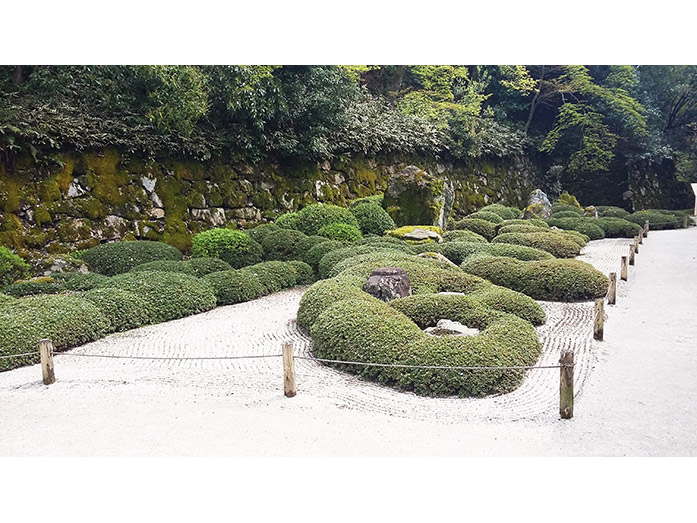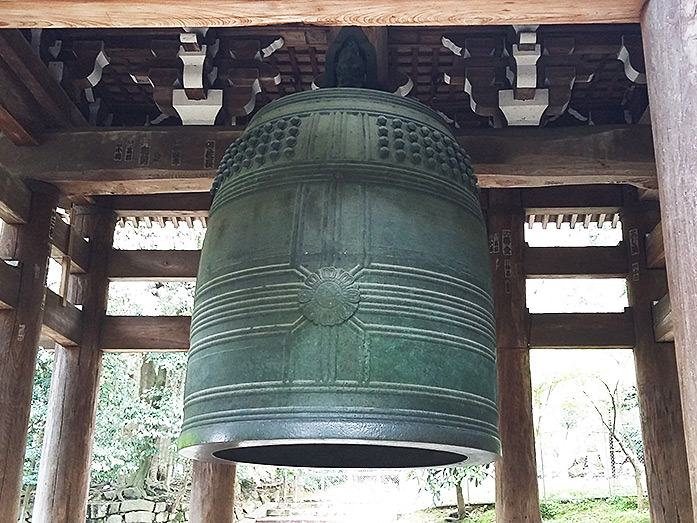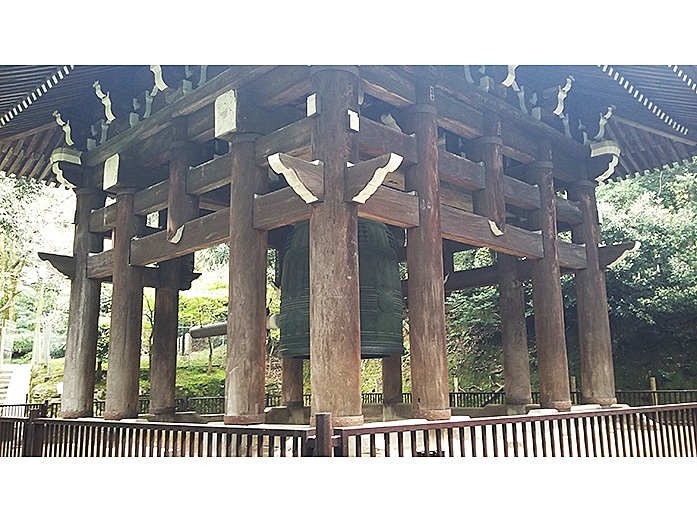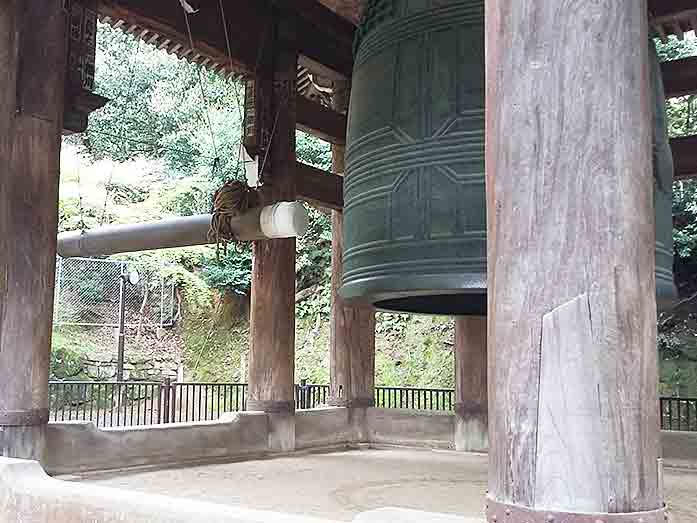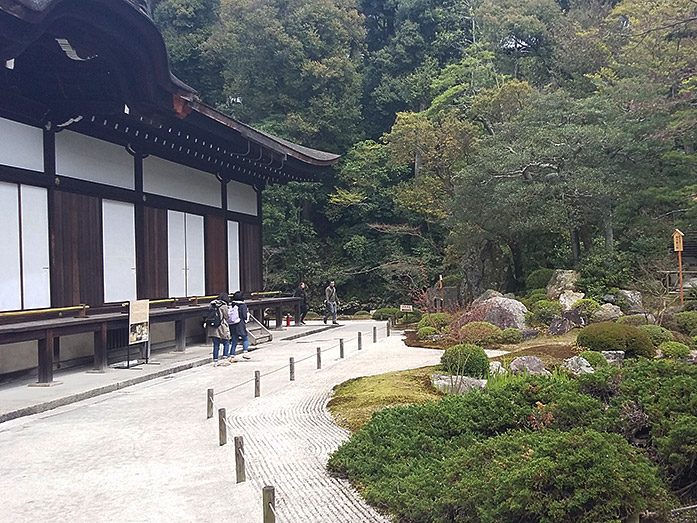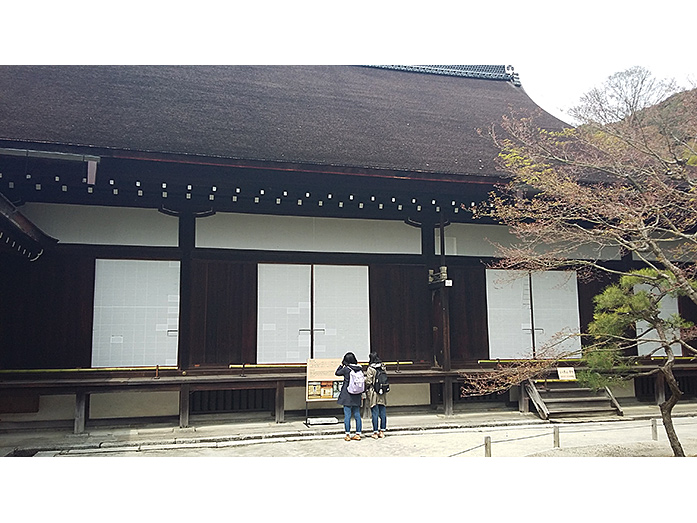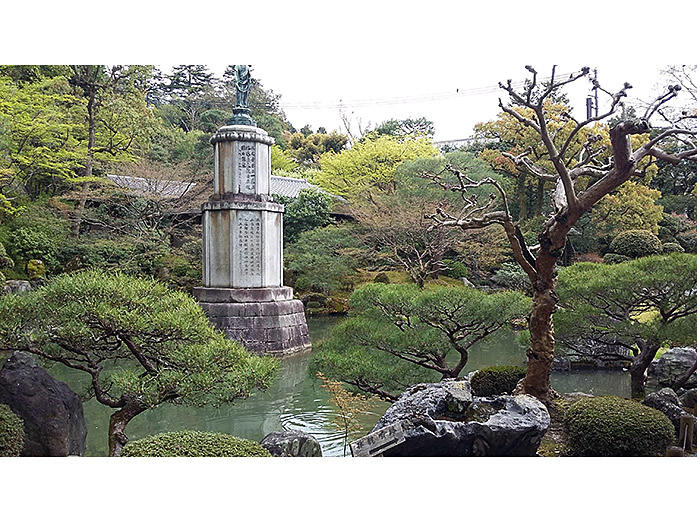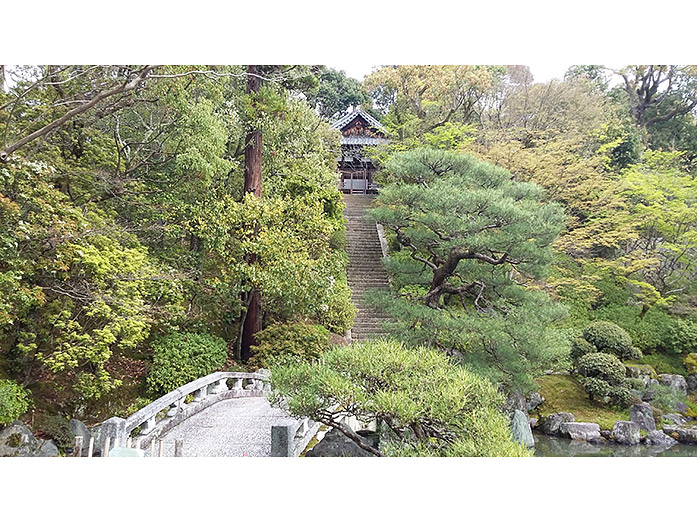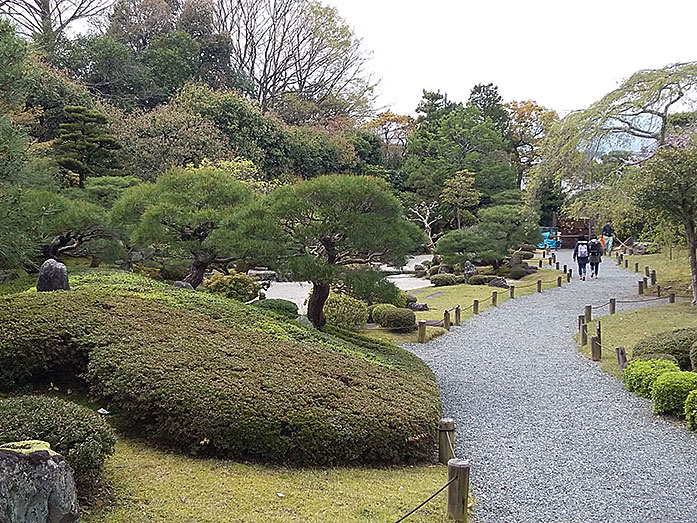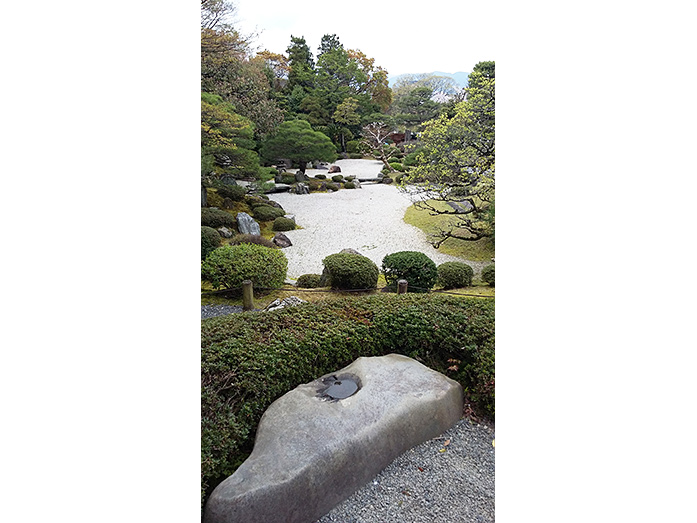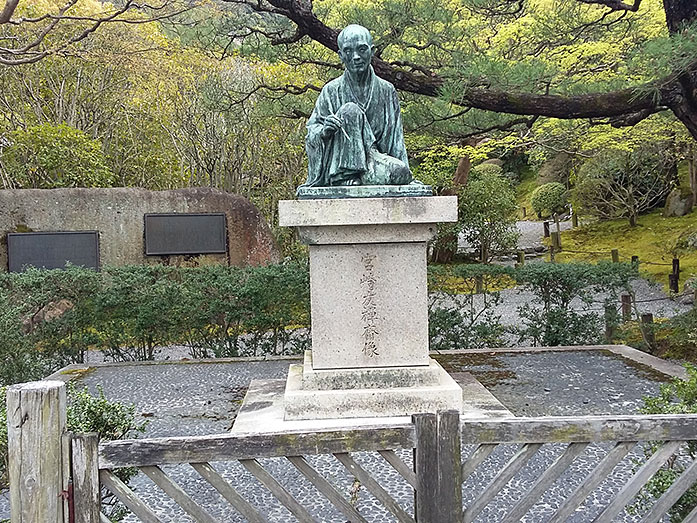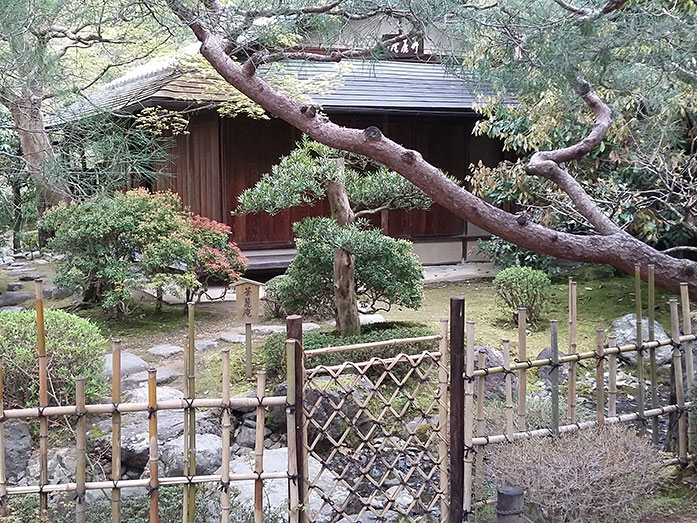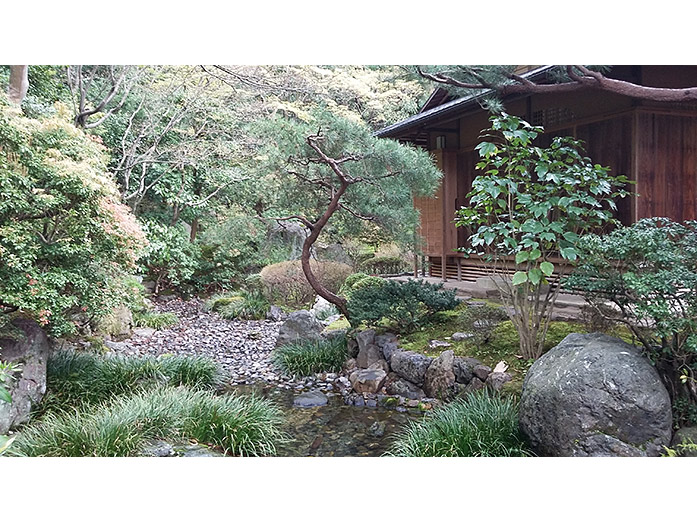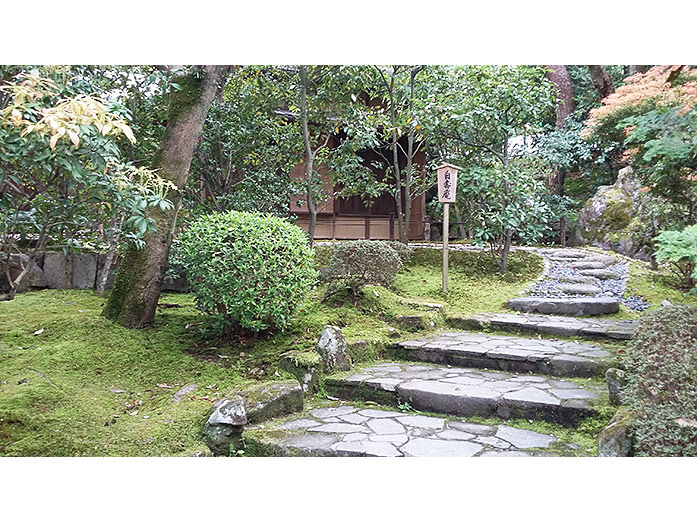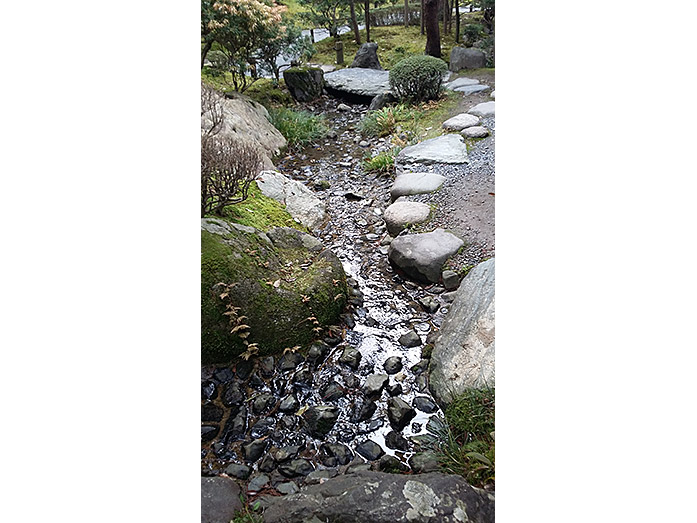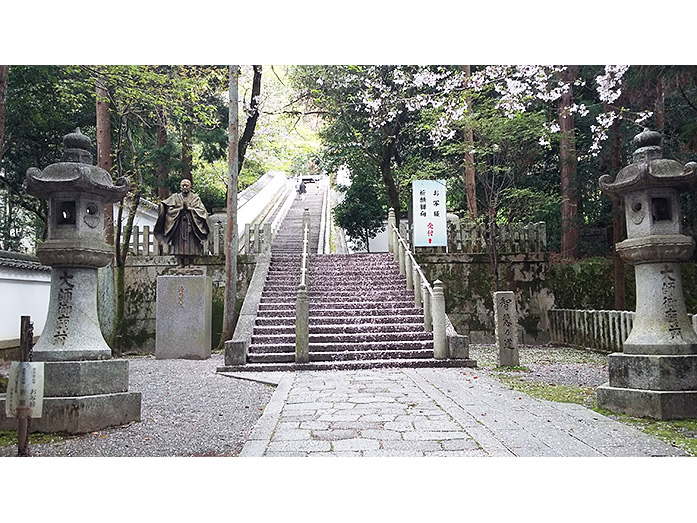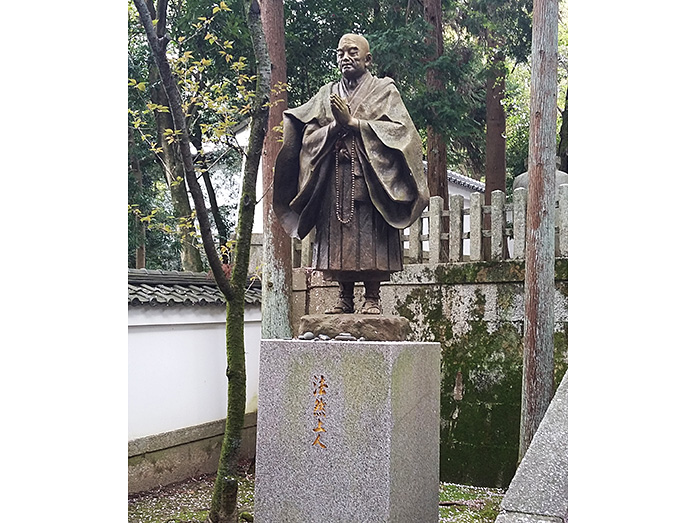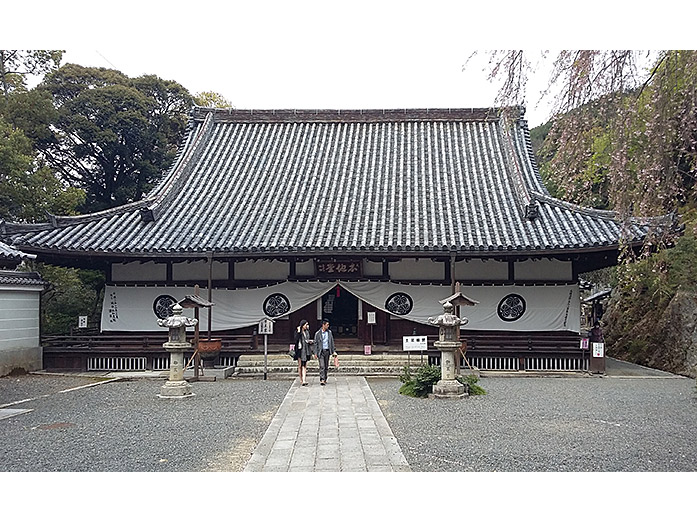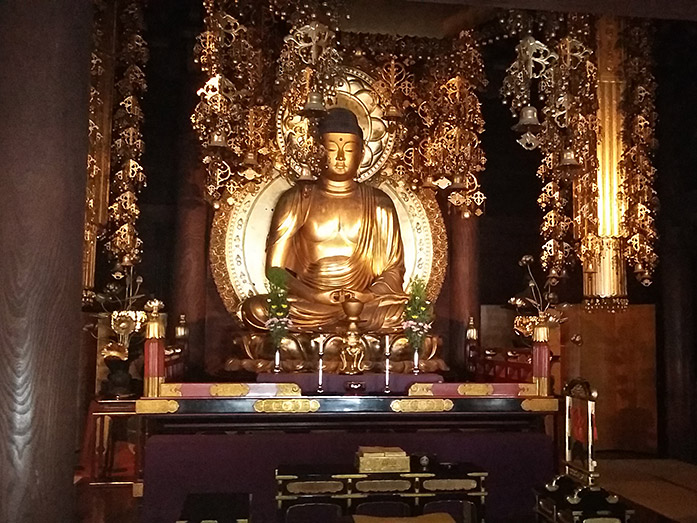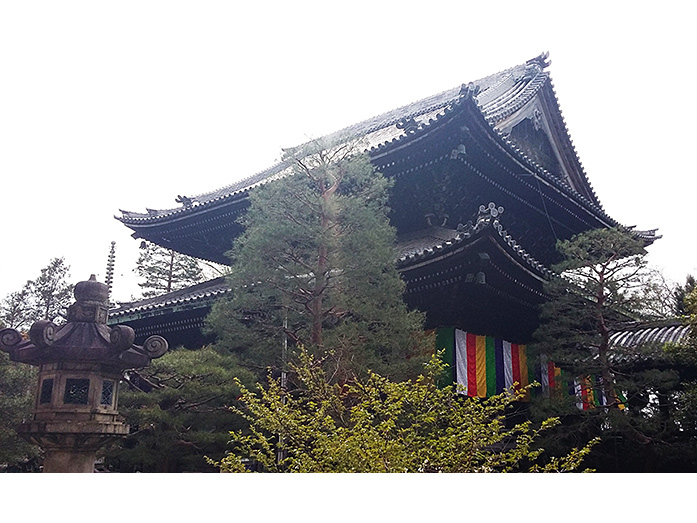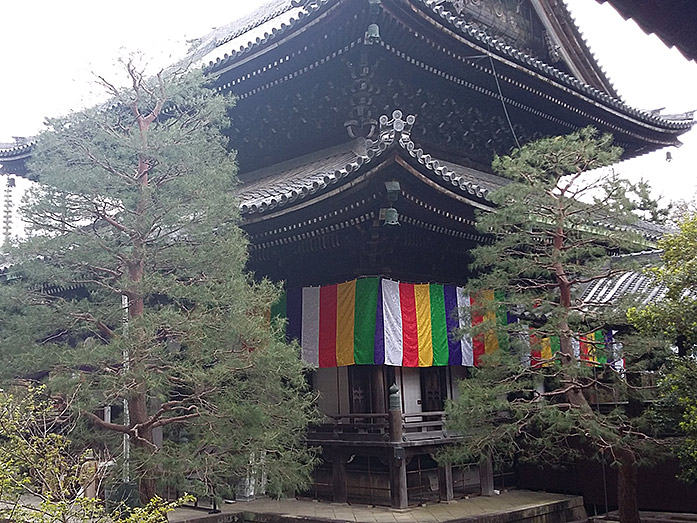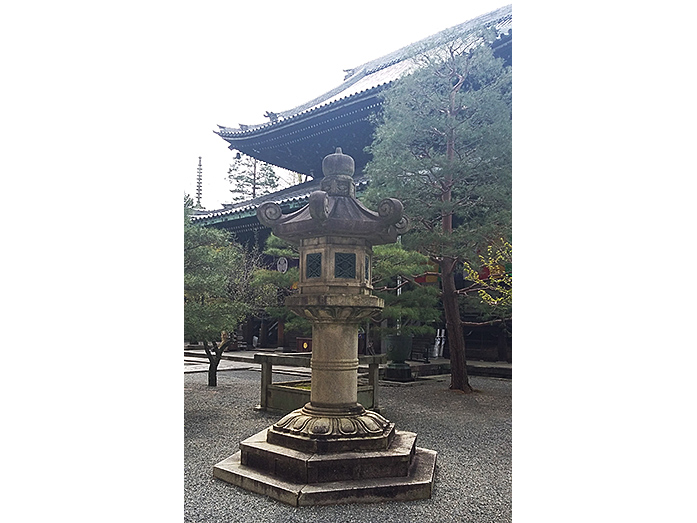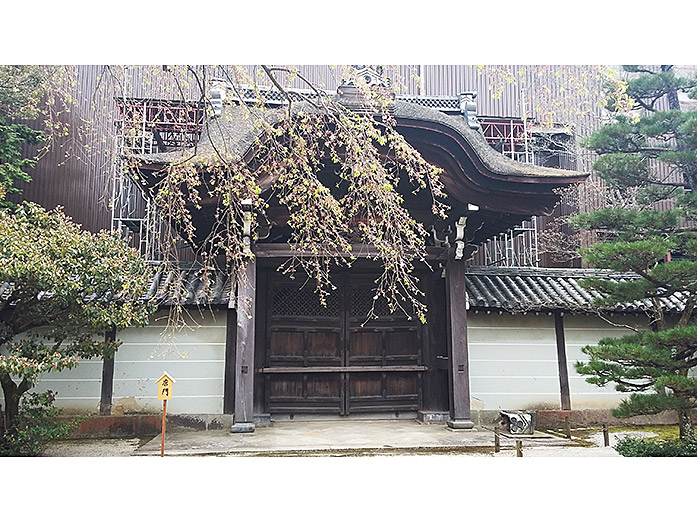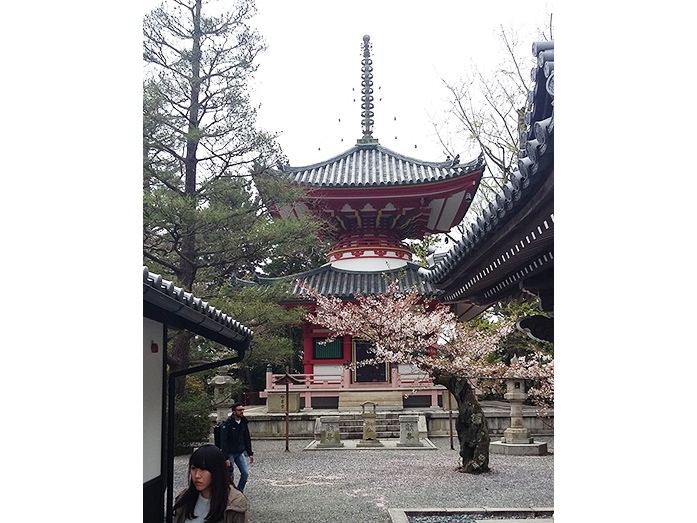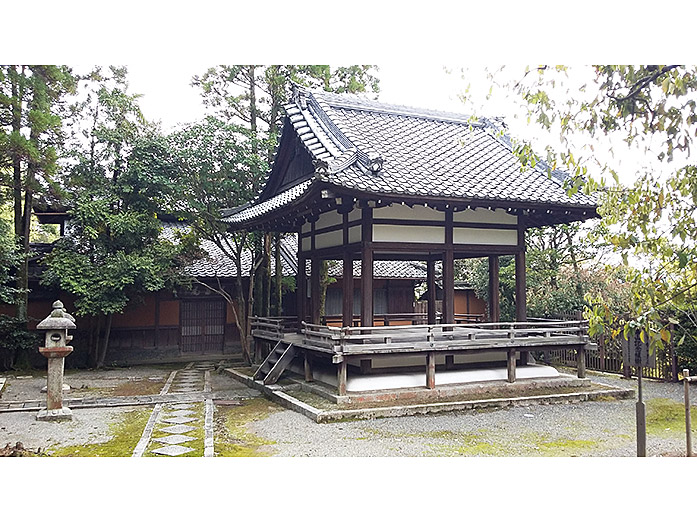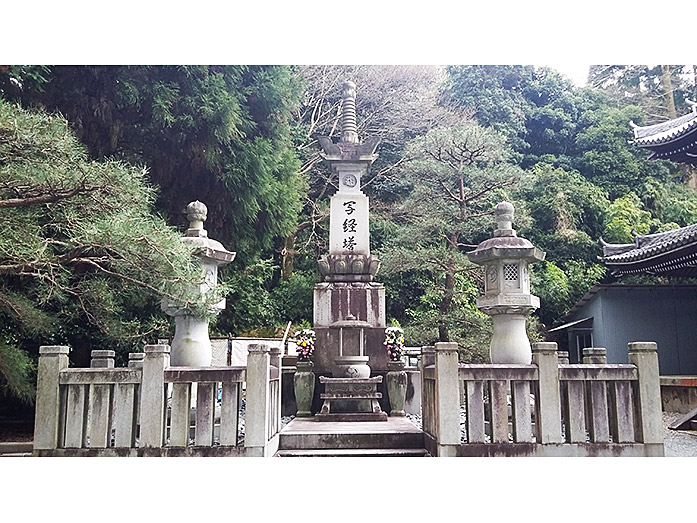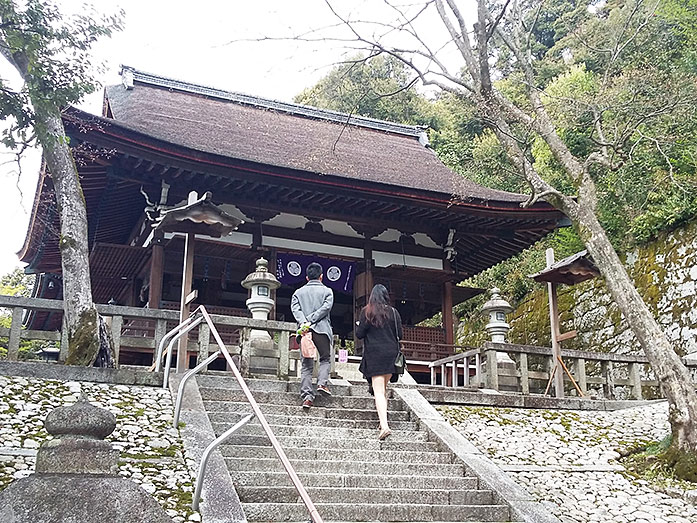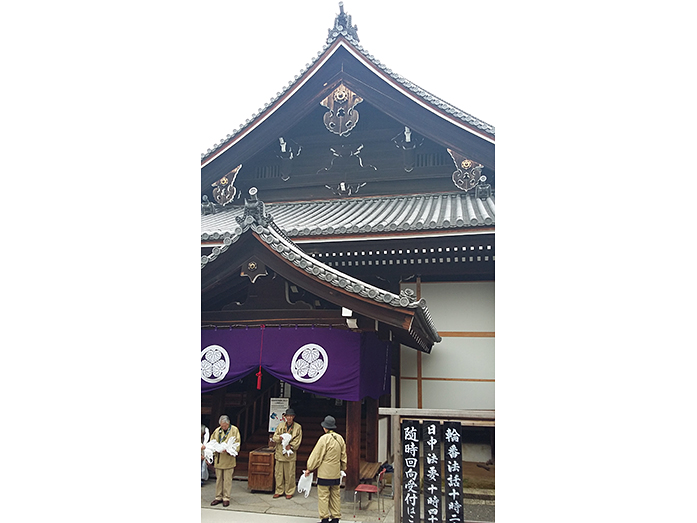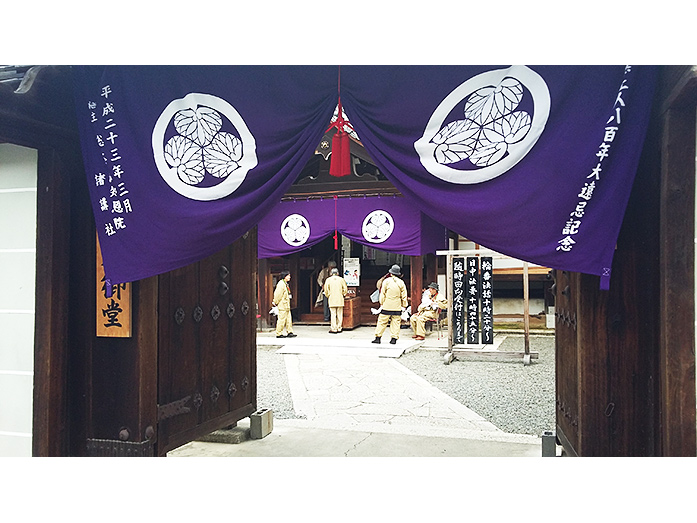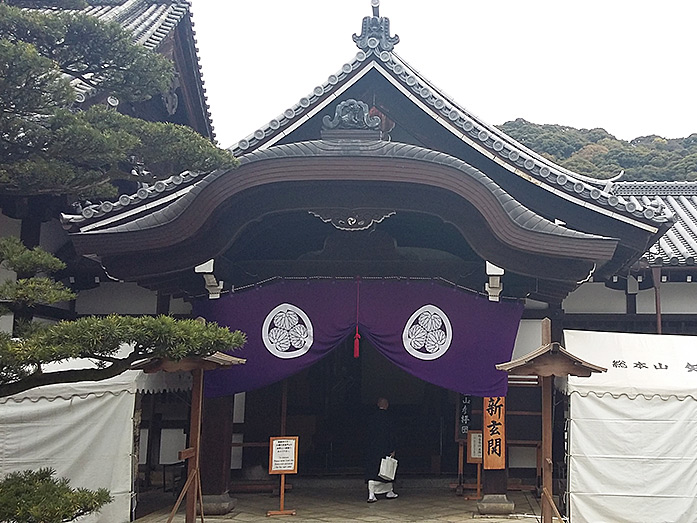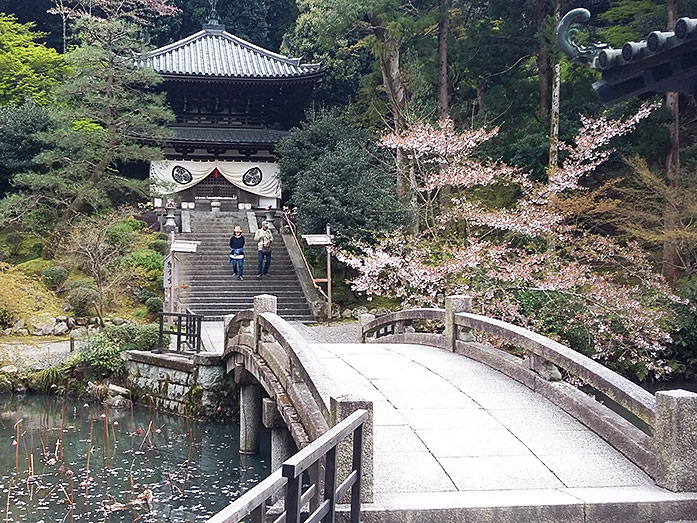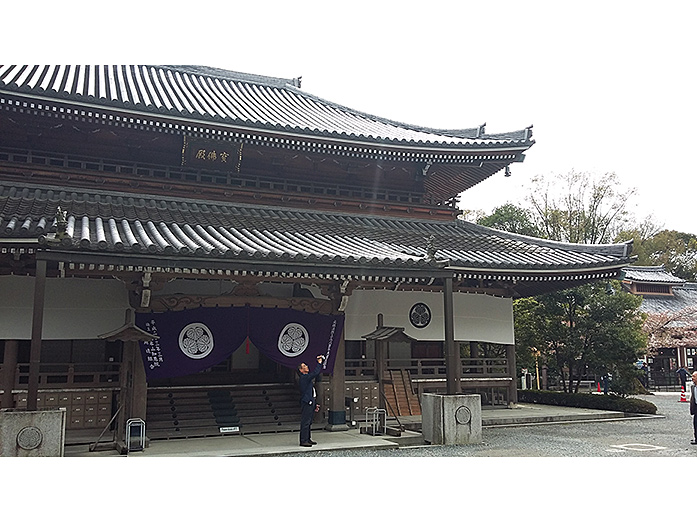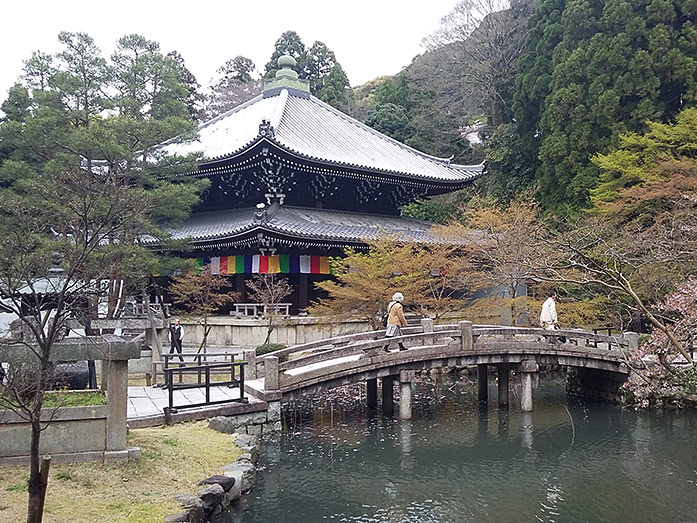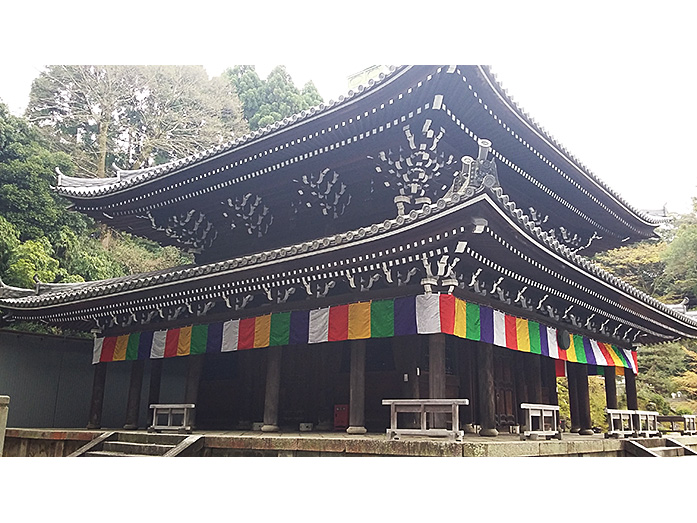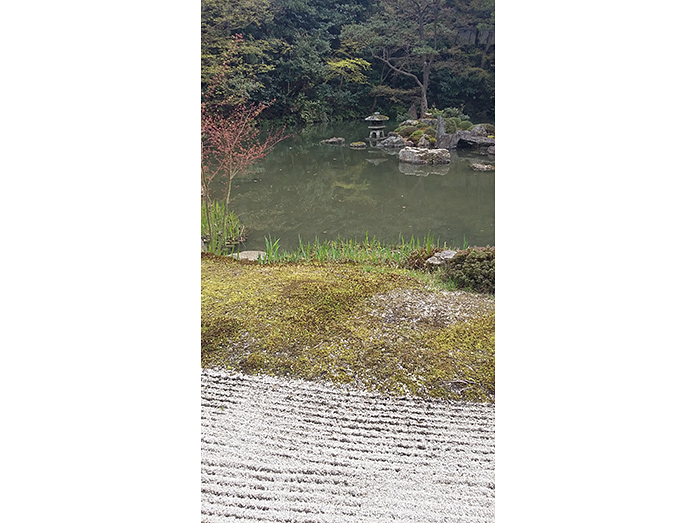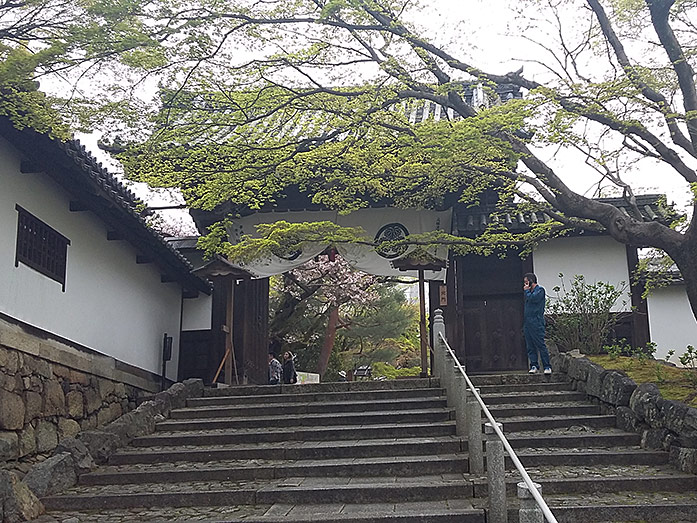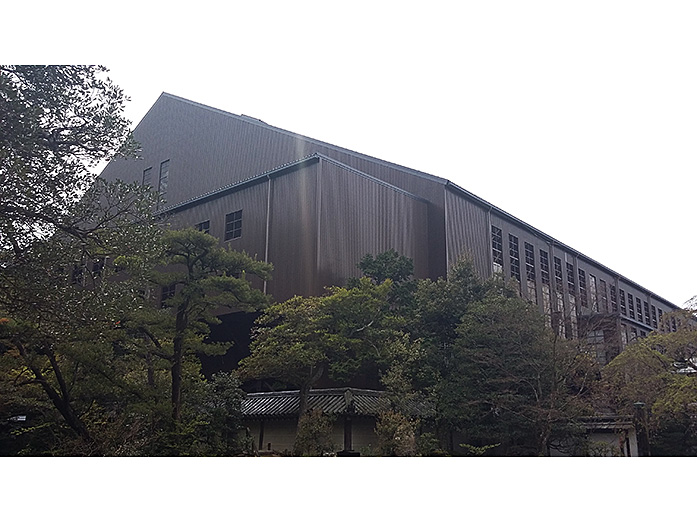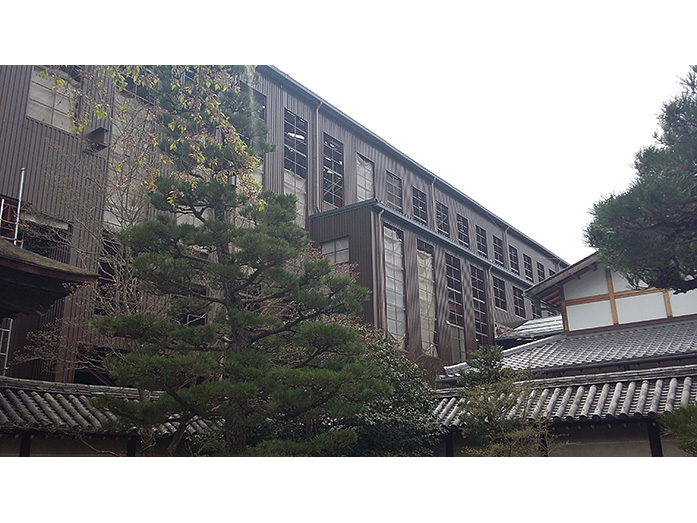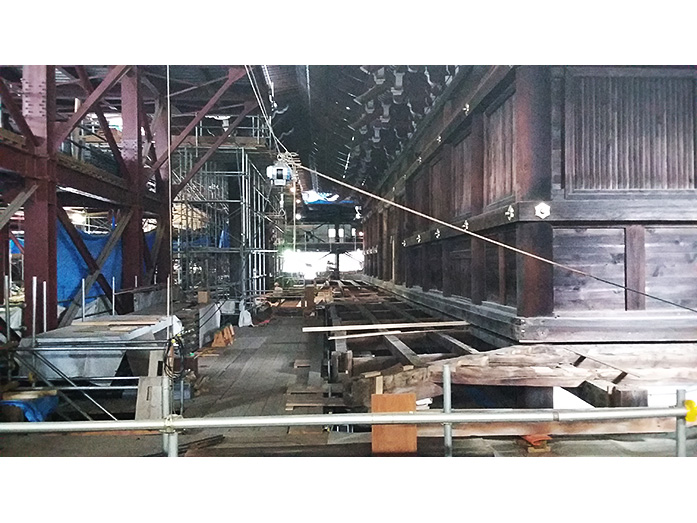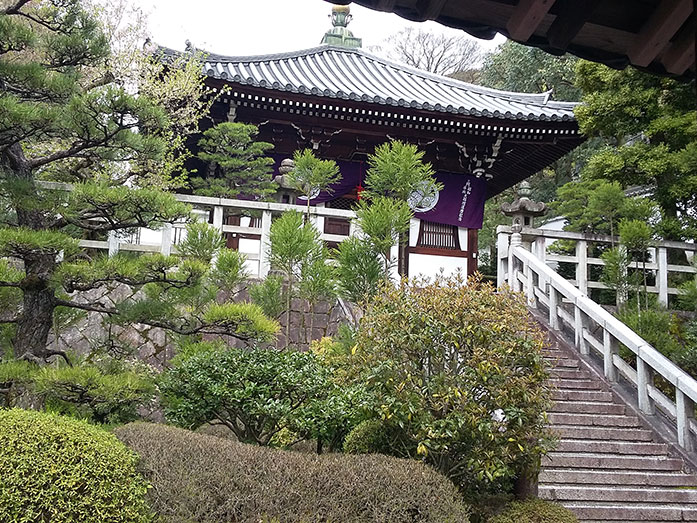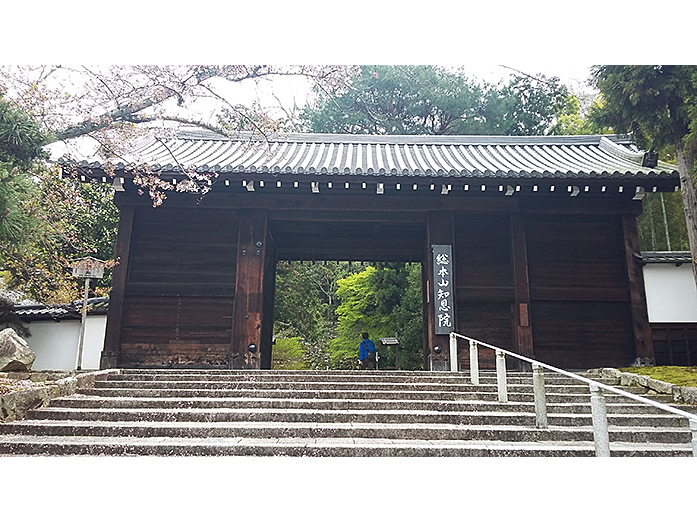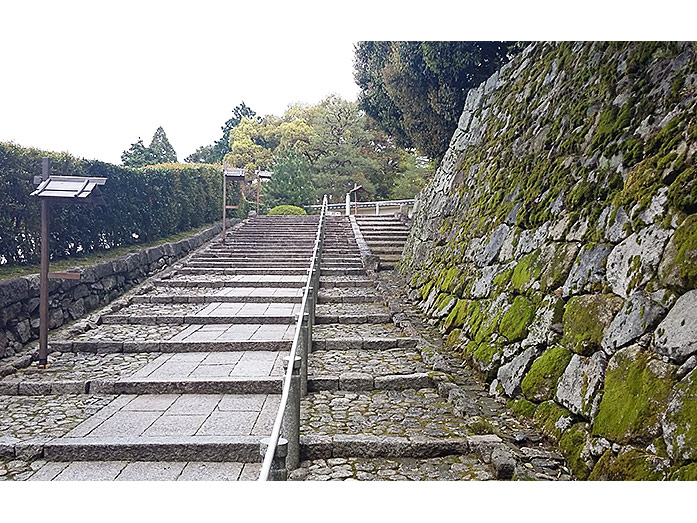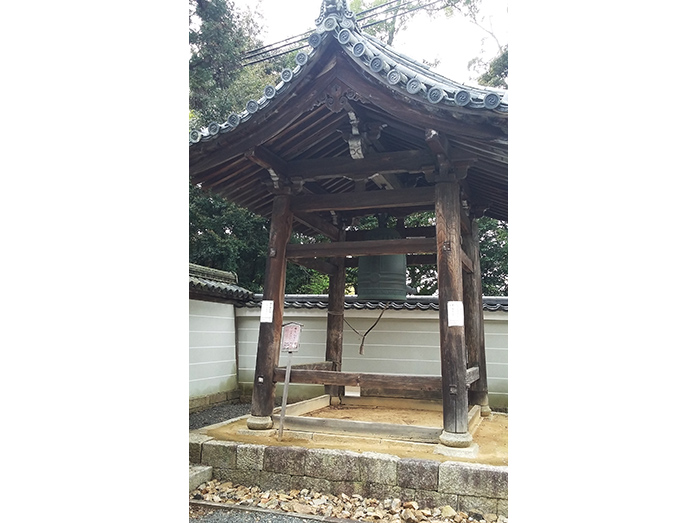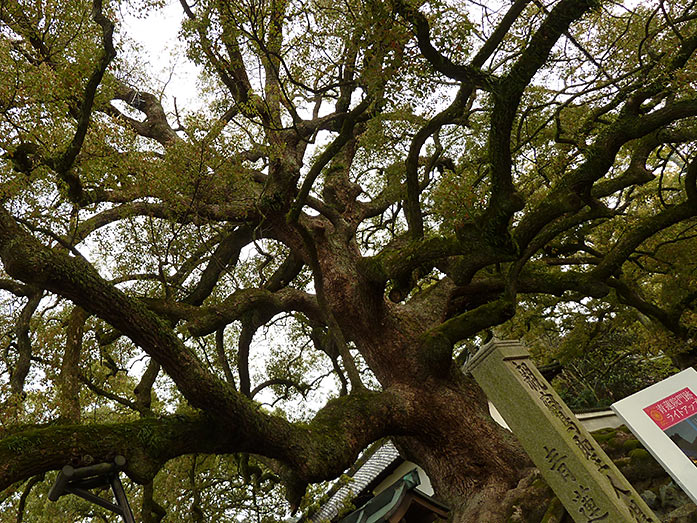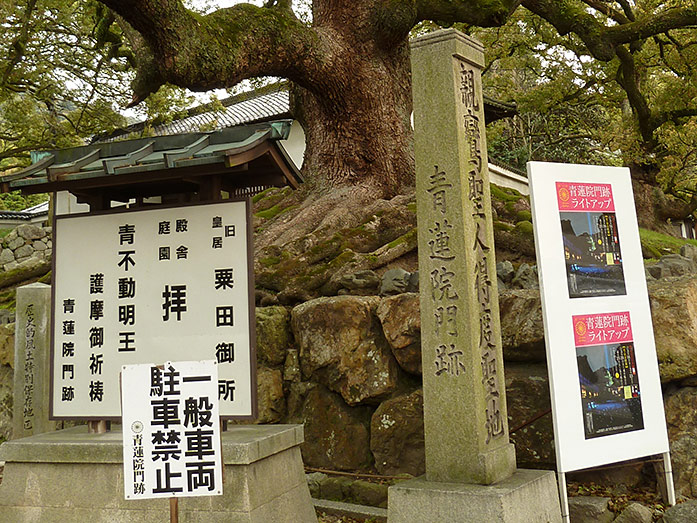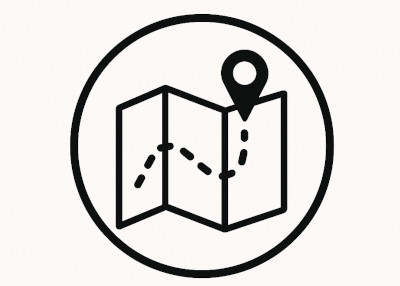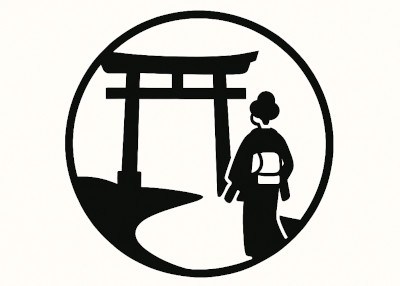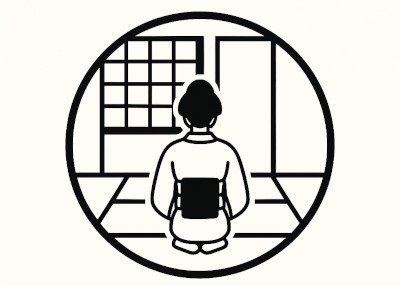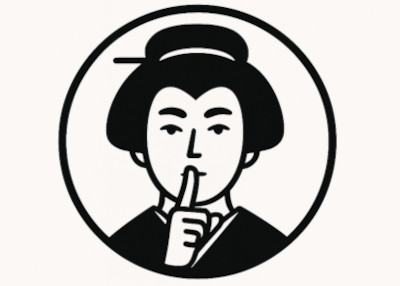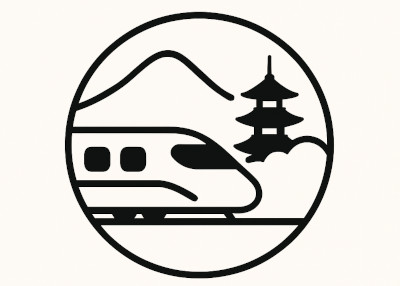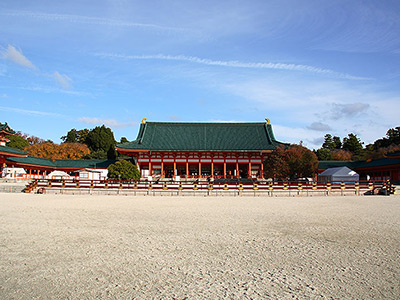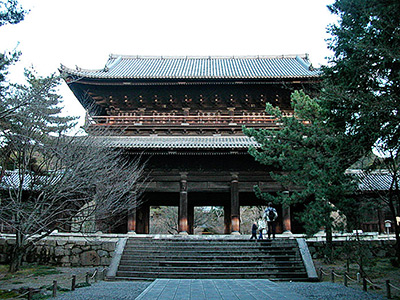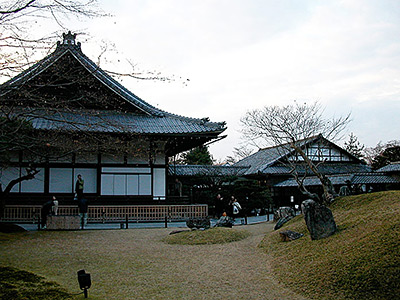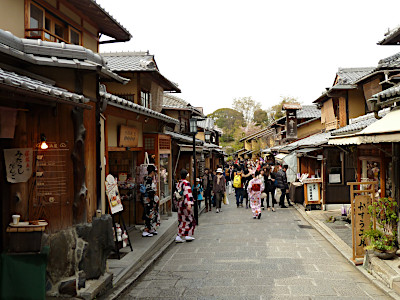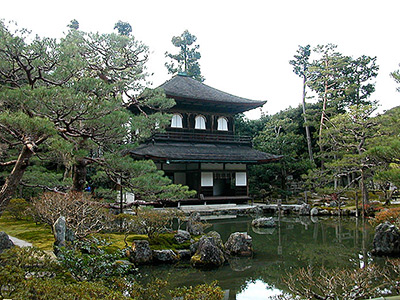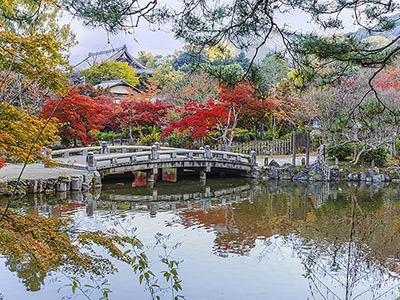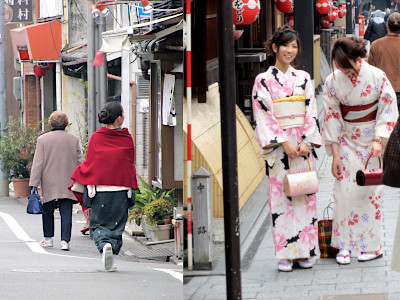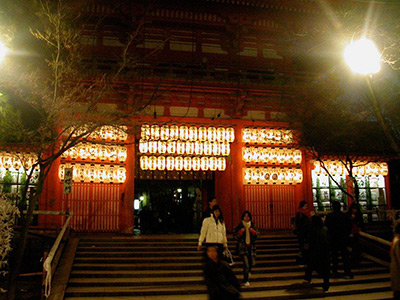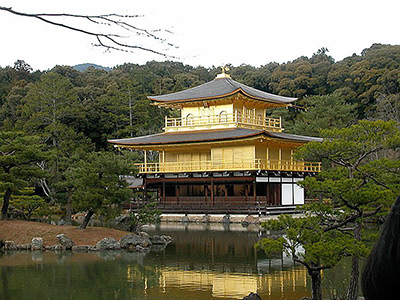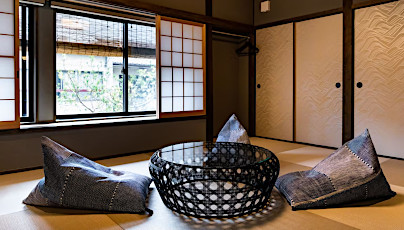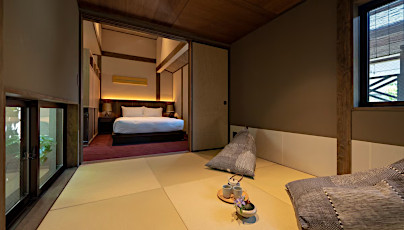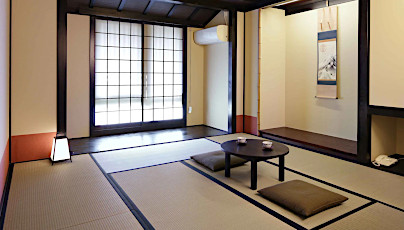Chion-in Temple in Kyoto
This post can contain affiliate links, which means that we may receive a small commission if you make a purchase using these links.
Facts & Figures
The Chion-in Temple (which means Monastery of Gratitude) in Kyoto is the head temple of the Pure Land Sect of Japanese Buddhism also called Jodo-shu. The sect has millions of followers. Their goal is to be reborn in the Western Paradise of Amitabha, also known as Jodo (Pure Land). Chion-in is one of the most sacred and most popular temples in Japan. Everything here is just on a grander scale. The temple grounds cover a space of 14.5 hectares. At the entrance, which can be reached after 50 steps, you are greeted by the largest temple gate in Japan. The so-called San-mon Gate is with a height of 24 meters and a width of 50 meters a really impressive sight.
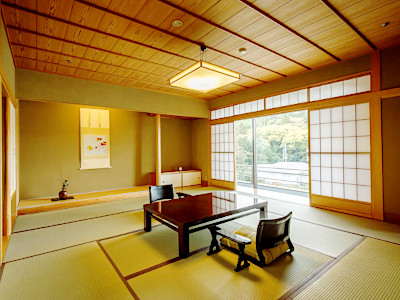 Experience the Ultimate Japanese Hospitality at a Kyoto Ryokan.
Experience the Ultimate Japanese Hospitality at a Kyoto Ryokan.
Find Your Perfect Ryokan Now >
The temple complex consists of 106 buildings and is located at the foot of Mt. Kachozan. 12 buildings have been designated as Important Cultural Properties or National Treasures by the Japanese government. 2 gardens (Hojo and Yuzen-en) are open to the public and these are my must-see recommendations for you. Last but not least the heaviest temple bell (74 tons, 3.3 meter-high) in Japan is rung 108 times by 17 monks on New Year’s Eve at Chion-in. The temple is located at a walkable distance from Shorenin Temple, Gion District, Yasaka-jinja Shrine and Maruyama Park. Interesting fact that the famous actor Tom Cruise shot scenes here for his movie The Last Samurai in 2003.
- Chion-in Temple Grounds:
- Opening Hours - daily from 9:00 am to 4:30 pm (last entry 3:50 pm)
- Admission Fee - free
- Hojo Garden + Yuzen-en Garden:
- Opening Hours - 9:00 am to 4:30 pm (last entry 3:50pm)
- Admission Fee - Both Gardens - 500 yen (Adults), 250 yen (Children), 450 yen (Group - Adults only)
History
Chion-in is linked to Honen (1133 - 1212), the founder of the Jodo Shu (Pure Land Sect) of Buddhism. The original temple was built in 1234 by Honen's disciple Genchi (1183 – 1238). Chion-in was in the past destroyed by earthquakes and fires. An especially harmful fire happened in 1633. Most of the buildings you see today like Ohojo, Mieido Hall, and Kohojo were rebuilt after that fire. The reconstruction phase lasted till 1641 and was financed by Shogun Tokugawa Iemitsu (1604 - 1651). The wood used for the construction was taken from the best trees of a Kiso Valley forest in Nagano Prefecture. Chion-in is since 1523 the head temple of the Jodo Shu. Shogun Tokugawa Ieyasu (1543 - 1616) was a follower of the sect and he and his family clan participated greatly in the further development of Chion-in.
Location

Chion-in is located in Kyoto north of Maruyama Park and Yasaka Shrine within the Higashiyama district.
Address: Chion-in 400 Rinka-cho, Higashiyama-ku, Kyoto, 605-8686 Japan
How to get to Chionin Temple?
- 20min from Kyoto Station to Chionin-mae bus stop by Kyoto City Bus 206
Sightseeing spots
most important places of Chionin:
San-mon Gate (main gate) - It is the largest wooden temple gate in Japan and was constructed during the Edo period (1603 - 1868) by Hidetada Tokugawa (1579 - 1632) in 1621. The San-mon Gate has the status of a National Treasure. It belongs to the three greatest temple gates in Japan. The other 2 can be found at Kuon-ji Temple (Minobu, Yamanashi Prefecture) and Nanzen-ji (Kyoto). The special roof style is called Irimoya-zukuri. It consists of more than 70000 tiles.
Mieido - The huge main hall, also known as Goei-do, houses the image of the founder Honen (1133 - 1212). At the moment Mieido, a National Treasure, is undergoing a major restoration until 2020 at the occasion of the 800th anniversary of the death of Honen. It serves as the center of the Chion-in temple grounds and was reconstructed by Iemitsu Tokugawa (1604 - 1651) during the Edo era in 1639. Miei-do is 45 meters wide and 35 meters deep.
Shue-do (assembly hall) - The hall received the status of an Important Cultural Property and was constructed during the Edo era in 1635. It is also known as the Hall of One Thousand Mats.
Kyozo (sutra repository) - Kyozo was constructed in 1621 and has the status of an important cultural property. Kyozo houses approx. 5600 volumes of the Issaikyo Buddhist sutras.
Amida-do Hall - Amida-do houses the image of Amitabha (Amida Nyorai).
Ohojo - The building, an important cultural property, dates back to 1641 and was used as a large guest house.
Kohojo - Kohojo was used as a small guest house and was constructed in 1641. It has been designated as an important cultural property by the Japanese government.
Kara-mon Gate - The Chinese-style gate is an important cultural property and was constructed in 1641.
Daishoro (large bell tower) - Daishoro belongs to the 3 greatest bells in Japan. The other 2 can be found at Todai-ji (Nara) and Hoko-ji (Kyoto). This important cultural property was constructed during the Edo period in 1678.
Seishi-do hall - The hall is an important cultural property and the oldest building of the temple complex. It was reconstructed in 1530 (Muromachi era) and can be found in the upper part of the temple grounds.
Haiden (worship hall) - Haiden Hall was built during the Edo period (1603 - 1868) in 1710.
Gobyo (Honen’s mausoleum) - It was constructed during the Edo period (1603 - 1868) in 1613. My tip: The location of Gobyo offers you amazing views over Kyoto.
Hojo Garden - This traditional Japanese Garden (chisen kaiyushiki style) with the Shinji Pond at its center dates back to 1641 and was designed by Buddhist monk So-Gyokuen during the Edo period (1603 - 1868). Hojo Garden can be found right behind the Mieido Hall. The garden got the status of a Place of Scenic Beauty.
Yuzen-en Garden - The dry landscape garden (karesansui) was largely refurbished in 1954 in commemoration of Miyazaki Yuzen’s 300th birthday, the founder of the Yuzen style of dyeing. The garden can be found on the right side of the San-mon Gate (main gate).
Santei Garden - This garden offers breathtaking views over the city of Kyoto. The building there was used in the past as a sutra-copying place.
Gongen-do mausoleum - Here are the spirits of shogun Tokugawa Ieyasu (1543 - 1616), his son shogun Tokugawa Hidetada (1579 - 1632) and the grandson Tokugawa Iemitsu (1604 - 1651) enshrined. The mausoleum was built in 1621.
Seven Wonders of Chionin (Nana Fushigi) - Try to find these century-old items about legends and Buddhist values during your visit:
1. Wasuregasa (a forgotten umbrella) - You will find the leftover of this umbrella in front of the Mieido hall. There are two legends about the origin of the umbrella. A master carpenter with the name Hidari Jingoro forgot it there or a white fox gave it as a reward. He had to leave this location, once the construction of Mieido started, but the monk promised him to build a new shelter and he did.
2. Uguisu-bari no Roka (unique hallway) - Mieido Hall, Shue-do (assembly hall), and Kohojo are connected by these corridors. These wooden corridors were used as an alarm system. When you walk on them they make a sound similar to a nightingale.
3. Nuke-suzume (A picture of sparrows) - The famous artist Kano Nobumasa painted those birds on a sliding door (fusuma-e), but you can’t see them anymore. There is only a little mark left and it says the birds flew away:)
4. Sanpo Shomen Mamuki-no-Neko (picture of a cat) - You will find this painting at the Japanese cedar door within the Ohojo building. It doesn’t matter from which angle you look at the picture, but it always seems that the cat is staring in your direction.
5. Uryuseki (a big stone) - Many legends are related to this stone, which is located right in front of the Kuro-mon (gate). The stone is guarded by a fence.
6. Oshakushi - This large and unique rice paddle is 2,5m long with a weight of 30kg.
7. Shiraki-no-hitsugi (plain wood coffin) - On the upper floor of the San-mon Gate are the coffins of the architects (Kinuemon and his wife) located. According to the history books they committed suicide after the construction was over.
Festival & Events (dates can change without notice)
April
Gyoki Daie (Memorial Service for Hōnen) (18th till 25th)
This is the most important ceremony at the Chionin Temple including various events like the flower offering ceremony.
May
Aoi Matsuri (15th)
The highlight of this festival is a large parade from the Imperial Palace through the Shimogamo Shrine and ends at the Kamigamo Shrine (Kamigamo-jinja). More than 500 people wearing aristocratic costumes from the Heian Period (794 - 1185). The Aoi Matsuri belongs with the Gion Matsuri and Jidai Matsuri as the three most famous festivals in Kyoto.
Arashiyama Mifune Matsuri (third Sunday of May)
The first part is held at the Kuramazaki Shrine. Later a procession is leading to the Oi River, where more ceremonies and traditional dances (Funa Asobi) are held. The Arashiyama Mifune Matsuri started in 1914.
July
Gion Matsuri (whole month)
The month of July is full of different events like the Yoiyama - Kyoto's Magical Night (locals in kimonos look at the giant Gion floats the day before the parade) or the famous Yamaboko Junko (float procession on the 17th of July).
October
Jidai Matsuri ("Festival of Ages") (22nd)
People celebrate with a large parade between Imperial Palace to Heian Shrine the anniversary of the foundation of Kyoto. App. 2000 participants wearing historical costumes from different time periods. Enjoy this great festival which lasts around 2 hours.
December
Bell Ringing on New Year’s Eve (Joya-no-kane) (31st)
17 monks are needed to hit the bell 108 times.
Where to stay in Kyoto?
Book your Flight Tickets and Rental Car for your Japan trip
Day trips from Kyoto:
Travelers who viewed Chionin Temple viewed also:
Top rated - Best Machiya Houses in Kyoto
THE MACHIYA Ebisuya, 192 Ebisuya-cho Shimogyo-ku, Kyoto 600-8062
This 3-star guesthouse got an excellent rating. All 30 individually furnished rooms offer free WiFi, air conditioning, bathrooms incl. toilets, fridges, 40-inch flat-screen TVs, and more. THE MACHIYA Ebisuya is located in central Kyoto.
View on Expedia.com
This 3-star guesthouse got an excellent rating. All 30 individually furnished rooms offer free WiFi, air conditioning, bathrooms incl. toilets, fridges, 40-inch flat-screen TVs, and more. THE MACHIYA Ebisuya is located in central Kyoto.
View on Expedia.com
The Machiya Kazahaya, 570-6 Kazahayacho, Shimogyo-ku, Kyoto, Kyoto, 600-8475
The Machiya Kazahaya offers for all guest rooms free WiFi, air conditioning, safes, bathrooms with toilets, refrigerators, and much more. Enjoy also the beautiful Japanese Garden. Guests gave this property the rating - Exceptional.
View on Expedia.com
The Machiya Kazahaya offers for all guest rooms free WiFi, air conditioning, safes, bathrooms with toilets, refrigerators, and much more. Enjoy also the beautiful Japanese Garden. Guests gave this property the rating - Exceptional.
View on Expedia.com
Kyomachiya Ryokan Sakura Urushitei, 425 Kichimonjicho, Shimogyo-ku, Kyoto, 600-8069
This beautiful 3-star guesthouse offers 32 rooms with free WiFi, air conditioning, bathrooms incl. showers and toilets, refrigerators, and much more. Enjoy also the relaxing indoor public bath (no minerals). Guests gave this property the rating - Wonderful.
View on Expedia.com
This beautiful 3-star guesthouse offers 32 rooms with free WiFi, air conditioning, bathrooms incl. showers and toilets, refrigerators, and much more. Enjoy also the relaxing indoor public bath (no minerals). Guests gave this property the rating - Wonderful.
View on Expedia.com

